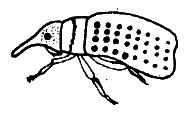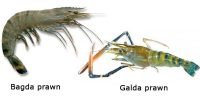Some harmful insects cause damage to a great extent to the crops in the jute fields. Two of the jute insects, along with their local and scientific names, the amount of their harmful effects and methods of control are discussed below.
(a) Jute hairy caterpillar: Its scientific name is Spilosoma oblique. The female moth lays eggs in numerous numbers on the lower surface of the leaf which develops into larvae in 5-6 days, pupae is developed in 9-10 days from larvae and then the attainment of adult forms.

Fig: hairy caterpillar
Harmful effect: The larvae are like those of caterpillar, which eats the green portion of leaf and sometimes the twig. As a result the plant becomes weak and the production of jute decreases.
(b) Stem weevil of jute: Its scientific name is Aplon corchorl. Adult forms are small and grey in colour. There is a curved antenna in front of the head. Female insect bores the node of jute plant and lays numerous eggs. The eggs hatch in 3-4 days and then by entering into stem, suck the juice. Pupae are developed within 10-13 days and within 4-5 days adult forms are developed.

Fig: Stem weevil
Harmful effect:
In the body of the jute plants the knots are developed. During time of rottening of jute, the fibers are torn at the point of the knots. As a result the production becomes decreases.
Remedy or control method:
(a) Biological control: By cutting the twigs of jute plant the insects are to be killed.
(b) Chemical control: Proper insecticides are to be sprayed in solution with water on jute lands. The questions in exercise at the end of each chapter of Textbook should be omitted.












